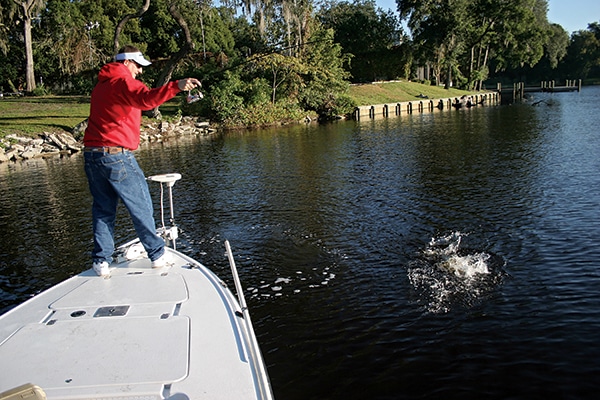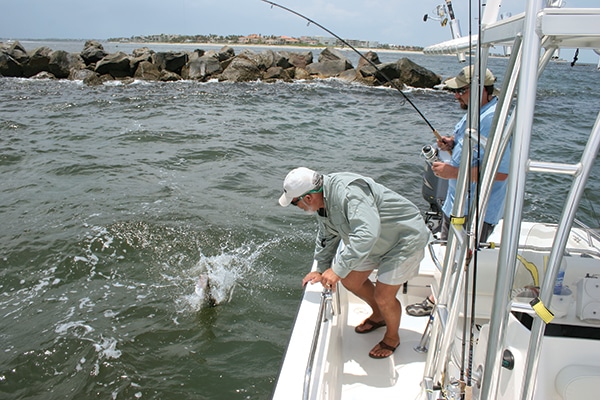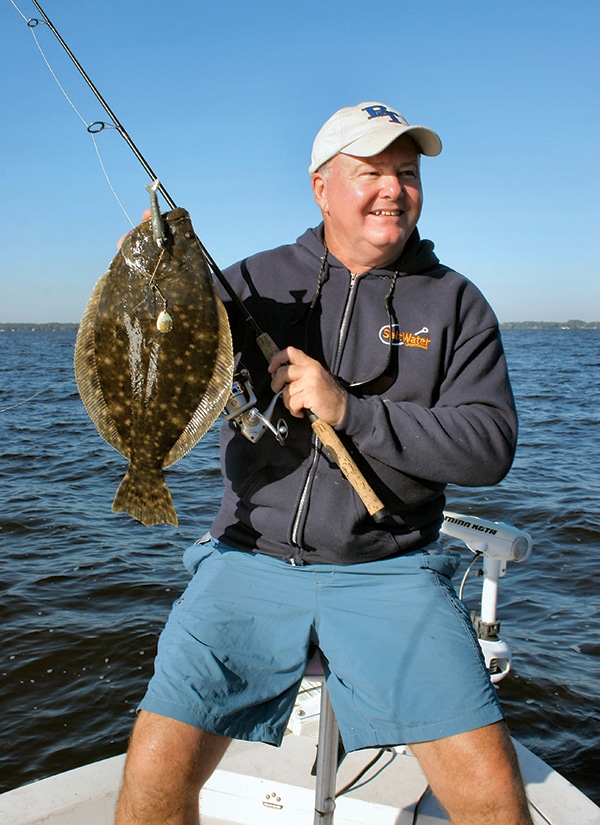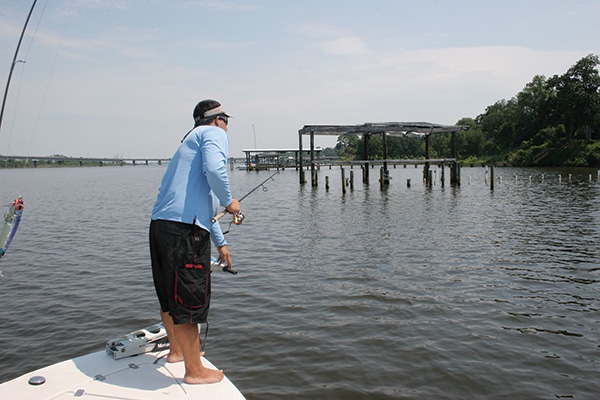Mike Hayes silently eased his 22-foot Pathfinder**** up to a cluster of boat docks in Florida’s St. Johns River. The tide was falling hard, pushing dark and swirling water through a maze of pilings and cross-beams that he intended to fish for redfish.
With the electric motor, he circled the docks until he was well down-current. Then he turned back into the flow, closing the gap to the structure. Within casting range, he slowed the skiff to pepper the pilings with casts.
He’d barely engaged his spinning reel when the water boiled beneath the labyrinth of lumber, and he maneuvered a chunky redfish toward his landing net.
In challenging conditions, Hayes’ success drilled home the importance of boat handling and positioning to set up in the best possible position to make every cast count. It’s a strategic approach that’s adaptable to a variety of situations.
Movable Feats
Anchoring is perhaps the most familiar method**** of boat control for successful fishing. In modest current and wind in shallow water, precise anchoring isn’t difficult. But when the wind is up, or the current is ripping in deep, offshore water, things get plenty tricky trying to keep a boat anchored on just the right spot to consistently catch fish such as snapper, grouper, amberjack and others.
Successful party-boat captains are some of the best in the business at anchoring just right for fishing near ledges, reefs, wrecks and other hot spots offshore. It’s a complicated boat dance for captains judging current speed in relation to wind and depth to get a 75-foot boat to set up well so a crew of 50 paying customers can load up on bottomfish.
And conditions change over time while at anchor. Current speed can increase or decrease, as can wind. It’s the captain’s job to keep tabs on these things, and constantly check electronics to be certain a boat is positioned just right, all the time.
Structure Fishing
Hayes is a run-and-gun angler, and he almost exclusively fishes artificial lures from a boat delicately powered into the current with an electric motor. In contrast, other folks who probe similar docks control their boats with Power Poles or anchors. This slower method of fishing is best for probing known hot spots, particularly when fishing natural baits. This is how ex-NFL Jaguars defensive end Jeff Lageman fishes much of the time for his beloved sheepshead.
Lageman chooses a likely dock, one covered with barnacles and shell. He then approaches it slowly from up-current to deploy a stern-mounted Power Pole to hold his boat in perfect position for close-quarters casting.1.
Lageman wants his boat tight to the structure, just far enough away so when he hooks a fish, he can muscle it away from obstructions. Tide and current push at the staked stern, so the bow stays within flipping distance of the cover. A Power Pole provides ideal boat control for this style of fishing because it deploys quickly and quietly. If he doesn’t find fish, he pulls it up and moves to another likely-looking spot.
When fishing down-current of docks and pilings for sheepshead, Lageman eases to the structure, -moving against the current with the electric motor. 2. He often picks a piling or strut to tie off a line, then lets out just enough line to hold his skiff in position to work the down-current lies for sheepshead 4.
Yet anchoring is the chosen control tactic for catching seatrout from docks, pilings and isolated -structures in running tide for Capt. Danny Patrick. He favors live shrimp, presenting baits to docks and other cover with a- -slip-bobber or float rig. This system requires exact anchoring 20 to 30 yards up-tide of a -targeted fishing spot, so live shrimp can be dropped overboard and drifted back to the structure in a natural -presentation 3.
These examples of dock fishing illustrate different and important boat-control methods that work not only in these particular dock-fishing situations, but whenever fish holding in moving water adjacent to structure require you to establish a stationary casting platform. Pilings, buoys and wrecks often require the same tactics. All of these strategies are -productive, and each is a different method of boat positioning.

Work the Program
Sometimes re-anchoring gets a boat back in the fish zone on a reef, wreck or even an oyster bar in strong current or wind. But as conditions change, sometimes a boat can be kept on a sweet spot simply by turning an outboard to make the boat swing in current or wind. Raising or lowering one or both trim tabs while at anchor also can help reposition a boat where it needs to be. Deploying a wind sock can be helpful, and where the sock is tied off on an anchored boat helps maximize and stabilize position near a choice fish location.
Proper boat control for effective fishing isn’t rocket science. It’s mostly common sense boatsmanship that allows anglers to quietly, effectively and efficiently work the water. But a skilled angler toils hard at proper boat control because he knows boat position affects the way lures and baits are presented to fish, and offers one more key to consistent catches.













